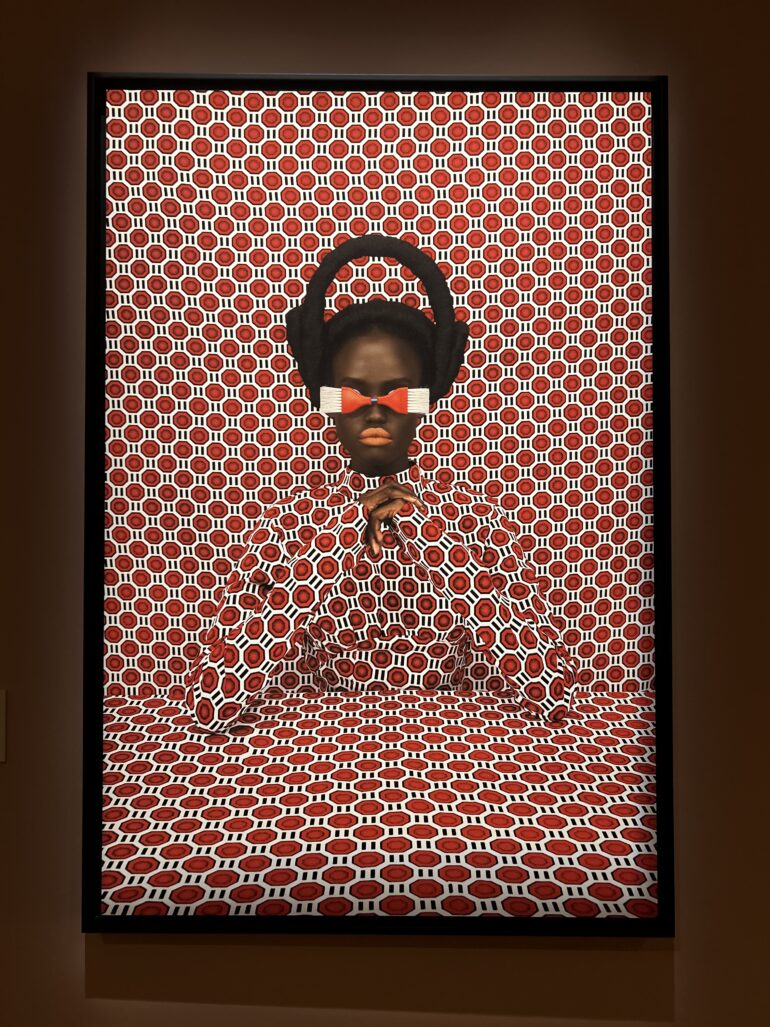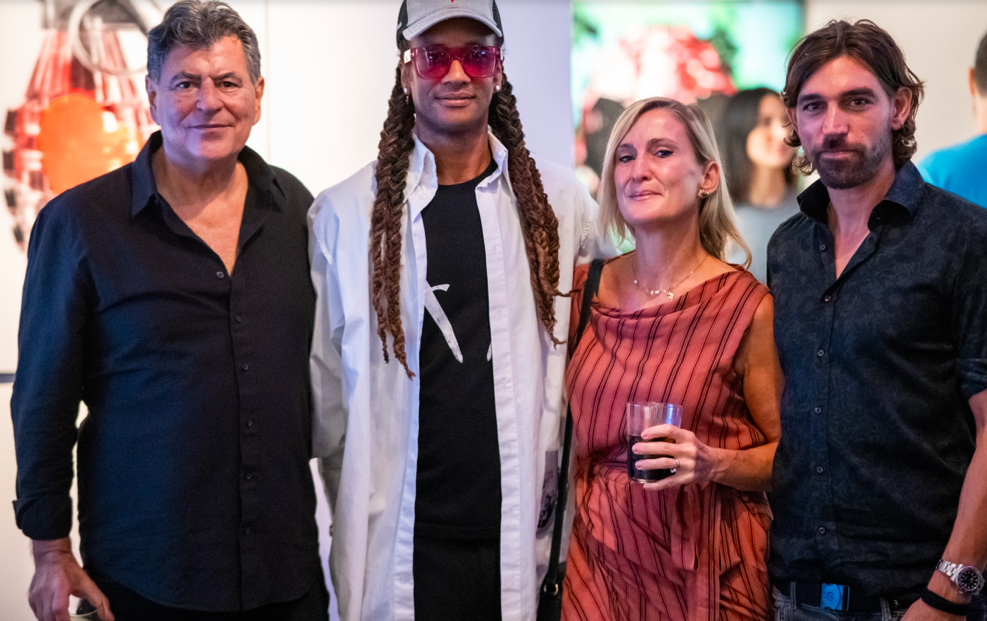A landmark exhibition from the CBH Bank Collection reframes a century of African and diaspora art in the global modernist canon
African and African diaspora art is finally claiming its overdue place on the global stage. More than Meets the Eye, the ambitious exhibition now at Geneva’s Musée Rath, offers a sweeping and revelatory journey through nearly a century of African modernism and contemporary expression. Drawn from the Compagnie Bancaire Helvétique (CBH) Bank Collection, the show traces the continent’s artistic evolution—from early modernist pioneers of the 1920s to today’s globally celebrated visionaries.
Presented at Switzerland’s oldest fine arts museum, the exhibition features more than 80 artists from 21 African nations. Spanning works made between 1929 and 2025, it charts the intertwined stories of heritage, modernity, and creative reimagining that define African art’s extraordinary trajectory.
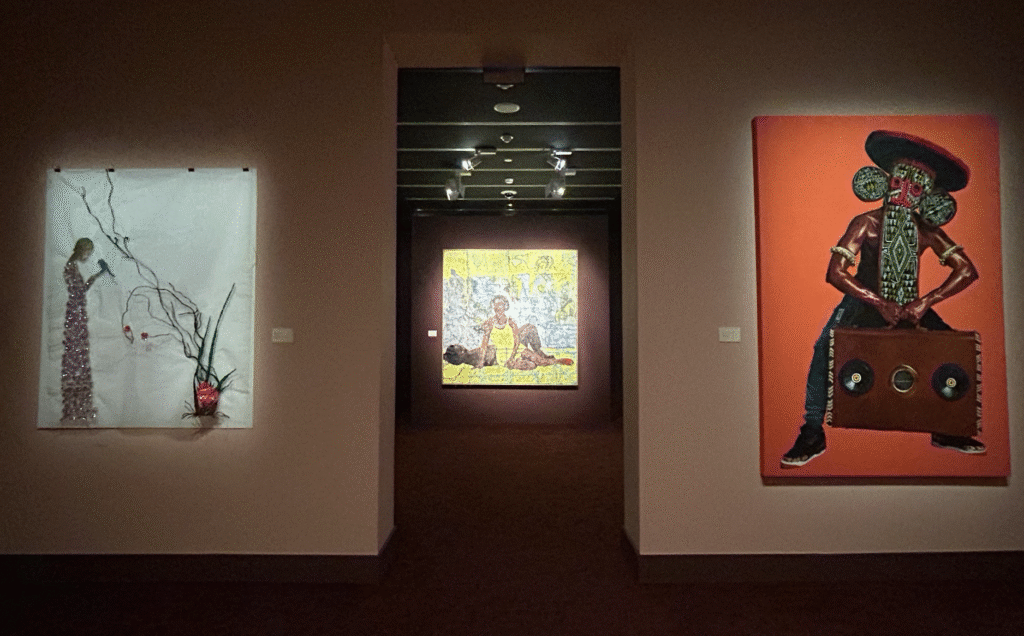
A Vision Rooted in Dialogue
The exhibition’s curators, Jean-Yves Marin (former Director of Geneva’s Musée d’art et d’histoire) and Ousseynou Wade (former Secretary General of the Dakar Biennale), bring complementary sensibilities to the project. Marin contributes a historian’s perspective on institutional framing, while Wade infuses a decolonial understanding that insists on African art being read on its own terms. Together, they craft a curatorial vision that rejects anthropological reductionism and asserts African art as a vital, evolving force within global modernism.
In their catalogue essay, Marin and Wade describe African creativity as “a dynamic of cultural reappropriation that celebrates the joy of being in harmony with nature and numerous protective deities.” This poetic ethos resonates throughout the exhibition, which privileges fluidity over chronology and conversation over categorization.
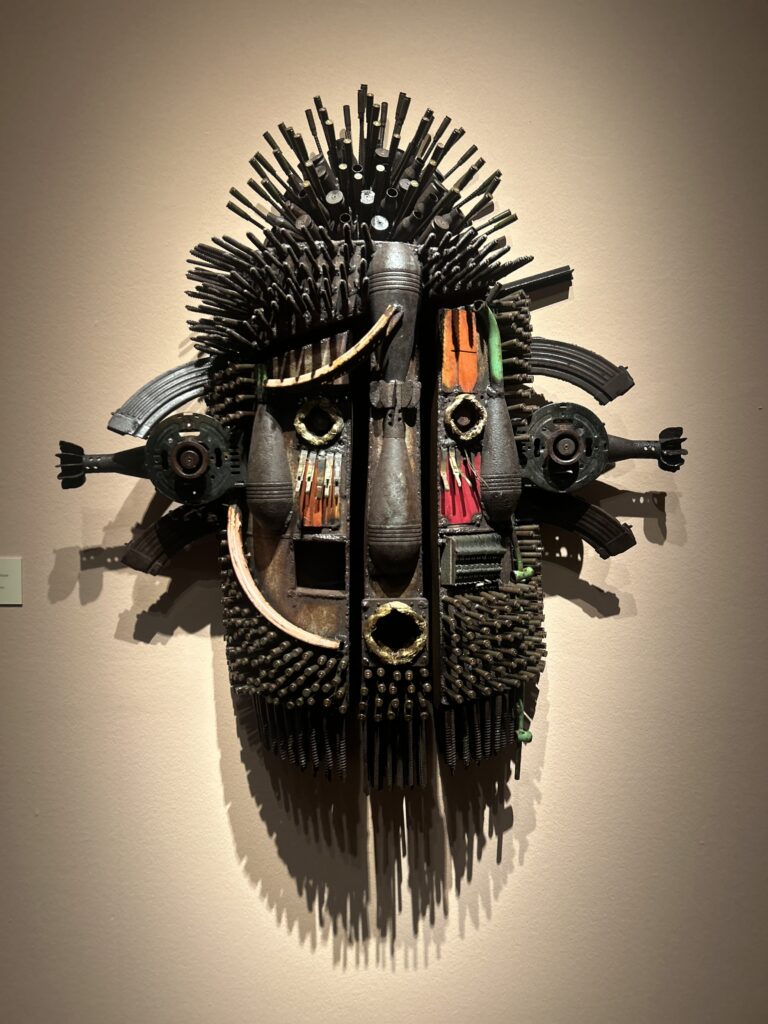
Seven Themes, One Continuum
Organized across seven thematic chapters, More than Meets the Eye invites visitors to move intuitively through interconnected worlds of emergence, spirituality, identity, intimacy, and the everyday. The scenography by Paris-based designer Pierre Yovanovitch enhances this sense of dialogue. Warm tones of ochre, rust, and umber recall African landscapes, while discreetly concealed wall texts allow the artworks to speak freely. The galleries flow like a visual symphony—sculpture answering painting, modernism echoing contemporary forms.
At the entrance stands Generous (2021) by Beninese artist Dominique Zinkpè, a monumental wooden goddess figure whose presence sets the tone for the exhibition: abundant, powerful, and protective. From here, the visitor embarks on a journey that is both spiritual and political, intimate and universal.
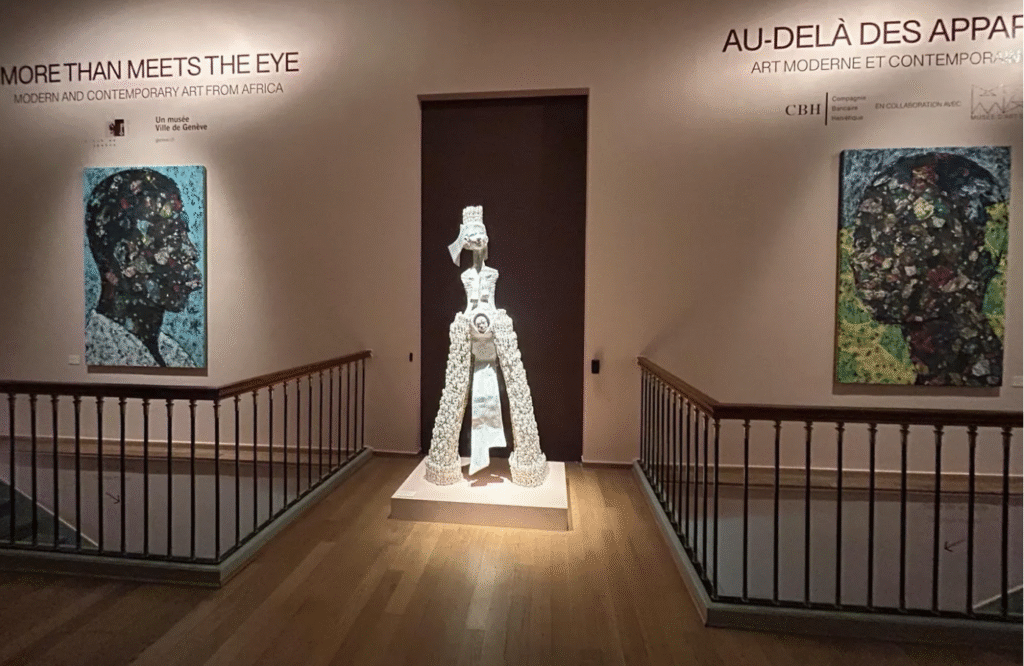
The Birth of African Modernism
The opening gallery, Emergence, traces the dawn of African modernism through early Congolese painters Albert and Antoinette Lubaki and Djilatendo. Their delicate watercolours—depicting elephants, village scenes, and abstracted birds—mark some of the first known modern paintings from sub-Saharan Africa. These works, at once naïve and visionary, reveal how African artists transformed local traditions into new pictorial languages without imitating European models.
Nearby, myth-infused compositions by Pilipili Mulongoy and Bela Sara expand this narrative of early modernism as spiritual renewal. Their scenes of ritual, nature, and myth signal an awakening of African visual autonomy in the face of colonial constraint.

Spirituality and Transformation
The exhibition’s next movement explores the sacred and the ancestral. Seyni Awa Camara’s terracotta figures—maternal, mythic, and fertile—embody a cosmology where human, animal, and divine coexist. Mozambican artist Gonçalo Mabunda transforms decommissioned weapons into haunting totems, reclaiming objects of violence as symbols of resilience. Meanwhile, Congolese artist Géraldine Tobe paints with soot rather than pigment, conjuring ethereal figures shrouded in smoke and memory. Her work, Vanité de Vanité, becomes a meditation on spirit and self in postcolonial Africa.

Between Worlds: Migration and Identity
At the exhibition’s core, Between Two Worlds examines migration, hybridity, and diasporic identity. British-Nigerian artist Yinka Shonibare’s Planets in My Head, Flute Boy (2019) anchors this section—a headless mannequin dressed in Dutch wax fabrics, flute in hand, its globe-like head a metaphor for cultural multiplicity. His witty yet incisive commentary on empire and race finds echoes in Romeo Mivekannin’s monumental reworking of Manet’s Olympia, where the artist replaces the white female nude with his own image—an audacious act of visual reclamation.
Younger voices like Hilary Balu, Catheris Mondombo, and Ayanfe Olarinde extend this dialogue, weaving themes of displacement, gender, and belonging into new visual languages that speak to a globalized African experience.

Everyday Lives, Intimate Worlds
The final galleries pivot from struggle to serenity, revealing how African artists capture the poetry of ordinary life. Ivorian painter Yeanzi’s ghostly figures, rendered in melted plastic, evoke urban alienation and environmental decay. By contrast, Aboudia’s graffiti-like canvases explode with the energy and trauma of Ivorian street life, echoing Jean-Michel Basquiat’s raw immediacy.
Yet moments of calm emerge. Congolese master Moke paints couples sharing meals, laughter, and intimacy—snapshots of joy amid the turbulence of postcolonial urban life. Tender portraits by Abe Odedina, Cassi Namoda, Kaloki Nyamai, and Victor Olaoye reveal a contemporary African portraiture grounded in empathy and everyday grace. A luminous highlight is Olivia Mae Pendergast’s mother-and-child painting, whose dappled light evokes Impressionism filtered through African warmth—a vision of continuity and peace.
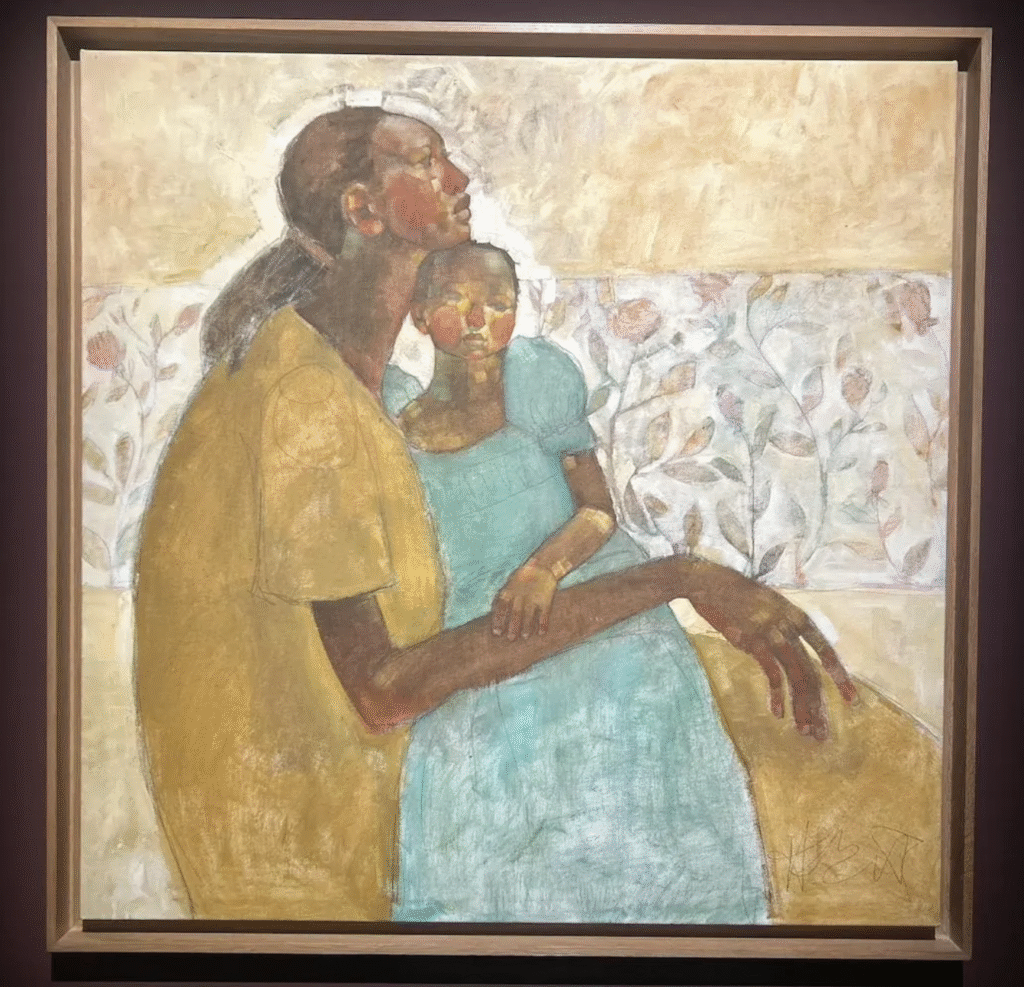
Photography and the African Gaze
Photography receives equal prominence here, from the timeless elegance of Malian masters Seydou Keïta and Malick Sidibé to the conceptual brilliance of contemporary voices. Keïta’s poised studio portraits and Sidibé’s exuberant images of Bamako nightlife remain vital documents of African self-fashioning and post-independence optimism.

Zanele Muholi’s black-and-white self-portraits bring the narrative firmly into the present. Their gaze—direct, defiant, and tender—asserts queer Black identity with global resonance. Following Muholi’s acclaimed Tate Modern retrospective, their inclusion in Geneva underscores Africa’s multiplicity of voices and the intersection of art and activism.
Nigerian photographer J.D. ’Okhai Ojeikere’s Hairstyles series celebrates women’s coiffures as living sculpture, while Kenyan artist Thandiwe Muriu’s vibrant, patterned portraits collapse subject and background in kaleidoscopic unity.

A Global Reframing
More than Meets the Eye arrives amid a broader institutional reckoning, echoing concurrent exhibitions like Nigerian Modernism at Tate Modern and Malick Sidibé’s Paris show at Fondation Cartier. El Anatsui’s Zulez (2023), a painted wooden composition suggesting clustered houses, stands out as a symbol of renewal and reinvention—an apt metaphor for African art’s evolving global stature.
Together, these international dialogues affirm that African art is no longer peripheral to the modernist story—it is central to it. Geneva’s Musée Rath, in partnership with CBH Bank, demonstrates how private collections can advance public understanding when guided by curatorial insight and ethical intent.

Seeing Beyond the Surface
In its scope, sensitivity, and presentation, More than Meets the Eye is a landmark achievement. It doesn’t merely showcase African art—it reframes the very act of seeing. Each work reveals layers of memory, history, and imagination that invite deeper reflection on how modernity itself has been shaped by African creativity.
Ultimately, this exhibition is about vision—how art can expand our perception and challenge inherited hierarchies. As visitors move through the ochre-lit rooms of Musée Rath, they are reminded that to truly see Africa’s art is to confront the richness of its humanity and its indelible place at the heart of global culture.
“More than Meets the Eye” runs at Musée Rath, Geneva, until 23 November 2025. More information and tickets here.
All featured images of ‘More than meets the Eye’ at Museum Rath, Geneva © Culturalee



